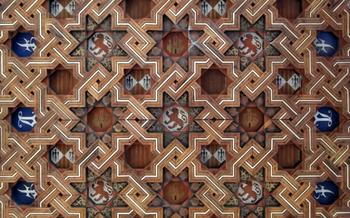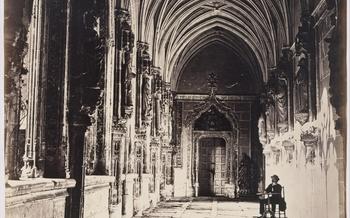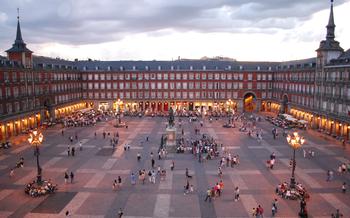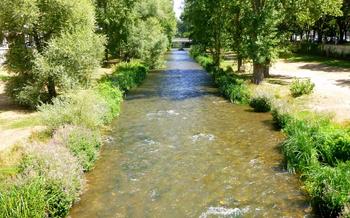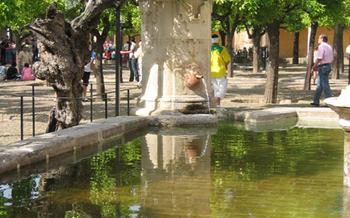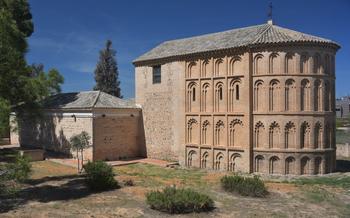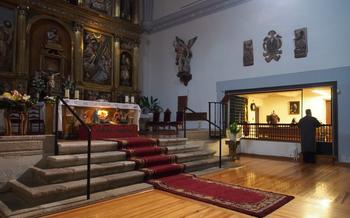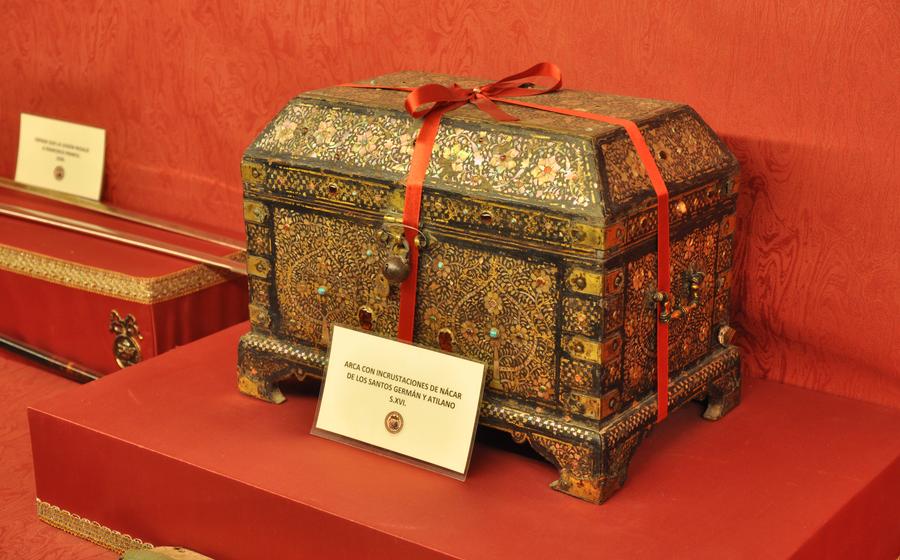
The Treasury of the Cathedral of Toledo
- The Treasury of the Cathedral of Toledo: A Historical Overview
- The Crown of Toledo: A Symbol of Royal Authority
- The Reliquary of Saint Leocadia: A Sacred Vessel
- The Monstrance of Cardinal Cisneros: A Masterpiece of Craftsmanship
- The Custodia of Arfe: A Stunning Display of Gold and Gems
- The Mantle of the Virgin Mary: A Sacred Garment
- The Cross of Cardinal Tavera: A Symbol of Faith
- The Capes of the Kings of Spain: A Display of Regalia
- The Liturgical Books of the Cathedral: A Treasure Trove of Knowledge
- The Tapestries of the Cathedral: A Visual Narrative
- The Stained Glass Windows: A Symphony of Light
- Sacred Relics: A Glimpse into the Past
- Insider Tip: Guided Tours and Special Events
The Treasury of the Cathedral of Toledo: A Historical Overview
The Treasury of the Cathedral of Toledo, located within the magnificent Cathedral of Toledo, stands as a testament to centuries of religious devotion, artistry, and historical significance. It is an awe-inspiring repository of precious artifacts, religious relics, and artworks that narrate the captivating history of the Catholic Church in Spain. The Treasury's origins can be traced back to the Middle Ages, a period when the Cathedral served as the religious and spiritual center of the Iberian Peninsula. Over the centuries, it received countless donations and offerings from devout Catholics, royalty, and wealthy patrons, each contributing to its exceptional collection.
The architectural style of the Treasury is a blend of Gothic and Renaissance influences, reflecting the diverse artistic currents that shaped Toledo's cultural heritage. Its design showcases intricate carvings, vaulted ceilings, and ornate embellishments that create an ambiance of reverence and grandeur. The Treasury serves not only as a repository of sacred artifacts but also as a museum that preserves and showcases the artistic and cultural legacy of the region.
The Crown of Toledo: A Symbol of Royal Authority
The Crown of Toledo is the most iconic artifact housed within the Treasury of the Cathedral of Toledo, not only for its historical and cultural significance but also for its intricate craftsmanship. This magnificent crown, adorned with gold, silver, jewels, and enamel work, was crafted in the early 15th century during the reign of King Henry III of Castile.
The crown features a distinctive design, with a wide band embellished with precious gemstones and intricate detailing. Flowers, leaves, and fleur-de-lis motifs adorn the band, representing the beauty and grandeur of the Spanish monarchy. The center of the crown is surmounted by an ornate cross, a powerful symbol of the Catholic faith that was deeply intertwined with the Spanish monarchy.
The Crown of Toledo served as a symbol of royal authority and was worn by the kings and queens of Spain during their coronation ceremonies. It represents the continuity of the Spanish monarchy and the deep connection between the church and the state. Over the centuries, the crown has been worn by some of Spain's most revered monarchs, including Isabella I of Castile and Ferdinand II of Aragon, who united Spain and ushered in the Golden Age.
Legends and stories abound about the Crown of Toledo, adding to its mystique. One legend tells of a time when the crown was stolen by a daring thief. However, the thief was unable to escape the wrath of the divine and was struck by lightning, causing him to drop the crown, which was miraculously returned to its rightful place.
The Crown of Toledo stands as a testament to the artistry, craftsmanship, and religious devotion that characterized the Spanish monarchy. Its presence within the Treasury of the Cathedral of Toledo serves as a reminder of the rich history and heritage that have shaped Spain's cultural and religious identity.
The Reliquary of Saint Leocadia: A Sacred Vessel
Within the hallowed halls of the Treasury, one encounters the Reliquary of Saint Leocadia, an exquisite receptacle that holds the remains of a revered martyr. This ornate vessel, crafted with intricate artistry, stands as a testament to the enduring faith and devotion that have flourished within these walls for centuries.
The story of Saint Leocadia, whose name graces this sacred artifact, is a tale of profound faith and unwavering devotion. Born into a noble family in the 4th century, she dedicated her life to serving the Christian community in Toledo. During a period of intense persecution under the Roman Empire, Leocadia remained steadfast in her beliefs, providing refuge and solace to fellow Christians who faced imminent danger.
In a tragic turn of events, Leocadia's unwavering faith drew the ire of Roman authorities, who subjected her to relentless torture in an attempt to force her to renounce her beliefs. Despite enduring unimaginable suffering, she remained steadfast, refusing to compromise her faith. Her unwavering devotion ultimately led to her martyrdom, solidifying her place as a revered figure within the Christian community.
The Monstrance of Cardinal Cisneros: A Masterpiece of Craftsmanship
One of the most impressive pieces in the Treasury is the Monstrance of Cardinal Cisneros, a masterpiece of goldsmithing created in the 15th century. The monstrance is a large, ornate container used to display the consecrated host during religious ceremonies.
The Monstrance of Cardinal Cisneros is made of gold and silver, and is decorated with intricate carvings, enamel work, and precious stones. It is a stunning example of Gothic craftsmanship, with its delicate tracery and vibrant colors. The monstrance is also a symbol of the power and wealth of the Catholic Church in Spain during the Middle Ages.
The Monstrance of Cardinal Cisneros is used in religious processions and ceremonies throughout the year. It is a particularly important part of the Corpus Christi procession, which is held in Toledo every year. During the procession, the monstrance is carried through the streets of the city, followed by a large crowd of worshippers.
The Custodia of Arfe: A Stunning Display of Gold and Gems
The Custodia of Arfe, also known as the Monstrance of Arfe, is an awe-inspiring masterpiece of goldsmithing. Created by the renowned Spanish silversmith Enrique de Arfe in the 16th century, this magnificent piece is widely considered to be one of the most significant works of the Renaissance period.
The Custodia stands at an impressive height of over two meters and is crafted from pure gold, silver, and precious stones. Its intricate design features a hexagonal base adorned with enamel medallions and surmounted by a slender, spire-like structure. The entire Custodia is embellished with a profusion of precious gemstones, including diamonds, rubies, emeralds, and sapphires.
Gothic and Renaissance influences are beautifully intertwined in the design of the Custodia. The Gothic elements, such as the pointed arches and pinnacles, lend an air of grandeur and verticality to the piece. The Renaissance influence, on the other hand, is evident in the intricate engravings, classical motifs, and naturalistic details that adorn the Custodia.
The Custodia of Arfe is not merely a work of art; it holds immense religious significance. It is used during the Feast of Corpus Christi, a grand religious procession that takes place in Toledo each year. The Custodia, containing the consecrated host, is carried through the streets of the city, drawing thousands of devout pilgrims and spectators.
This exceptional masterpiece is a testament to the skill and artistry of Enrique de Arfe and is a source of pride for the city of Toledo. It is a must-see for anyone interested in sacred art, history, or the beauty of craftsmanship.
The Mantle of the Virgin Mary: A Sacred Garment
Among the many treasures housed within the Treasury of the Cathedral of Toledo, the Mantle of the Virgin Mary holds a special place of reverence and significance. Crafted from the finest materials and adorned with intricate embroidery, the Mantle is a testament to the artistry and devotion of its creators. Its rich history is intertwined with legends and traditions that have been passed down through generations, adding to its allure and sacredness.
The Mantle is believed to have been worn by the Virgin Mary herself, imbuing it with a deep sense of spirituality. Its intricate embroidery depicts scenes from the life of Christ and the Virgin, offering a visual narrative of their journey. The vibrant colors and meticulous craftsmanship of the Mantle have remained remarkably well-preserved, showcasing the exceptional skills of the artisans who created it.
Over the centuries, the Mantle has become an integral part of religious ceremonies and processions in Toledo. It is paraded through the streets during special occasions, drawing throngs of faithful who seek blessings and pay homage to the Virgin Mary. The sight of the Mantle, shimmering in the sunlight and carried aloft by devout believers, creates a truly awe-inspiring spectacle.
The Cross of Cardinal Tavera: A Symbol of Faith
Among the many treasures of the Cathedral of Toledo, the Cross of Cardinal Tavera stands out as a poignant reminder of the deep faith and devotion that has characterized the history of the church. Created in the 16th century, the cross is a testament to the artistry and craftsmanship of the period. Its intricate design and delicate carvings are a testament to the skill of its creators.
The cross is named after Cardinal Juan Pardo de Tavera, who served as the Archbishop of Toledo from 1534 until his death in 154Tavera was a fervent believer in the power of faith and commissioned the creation of the cross as a symbol of his own devotion. The cross was initially used as a processional cross, carried in religious processions throughout the city of Toledo. It was a powerful symbol of the church's authority and influence, and it served to inspire and unite the faithful.
Over the centuries, the Cross of Cardinal Tavera has become an iconic symbol of the Cathedral of Toledo. It is displayed prominently in the sacristy, where it continues to be a source of inspiration for visitors from around the world.
The Capes of the Kings of Spain: A Display of Regalia
The Treasury of the Cathedral of Toledo houses a collection of royal capes, known as Capas Pluviales, which were worn by the monarchs of Spain during religious ceremonies and solemn occasions. These opulent garments, crafted from luxurious fabrics and adorned with intricate embroidery, are a testament to the wealth and power of the Spanish monarchy.
The capes are a symbol of royal authority and were traditionally worn by the king during processions and other religious events. They are made of velvet or silk and are richly decorated with gold and silver thread, pearls, and precious stones. The designs often incorporate heraldic symbols, such as the coat of arms of the reigning monarch, as well as religious motifs and imagery.
The Capes of the Kings of Spain are not only symbols of royal power but also works of art in their own right. The intricate embroidery and exquisite craftsmanship of these garments showcase the skill and artistry of the artisans who created them. They are a valuable part of Spain's cultural heritage and offer a glimpse into the splendor and majesty of the Spanish monarchy.
The Liturgical Books of the Cathedral: A Treasure Trove of Knowledge
The Treasury of the Cathedral of Toledo houses a remarkable collection of liturgical books that hold immense historical, religious, and cultural significance. These precious volumes, adorned with intricate illuminations and calligraphy, are a testament to the artistic mastery and spiritual devotion of the past.
Among the most notable books is the Mozarabic Missal, a rare and ancient manuscript that dates back to the 10th century. Written in the unique Mozarabic script, it contains the liturgical texts and prayers used by the Mozarabs, a Christian community that preserved their distinct traditions in the Iberian Peninsula during the period of Muslim rule.
Another highlight is the Book of Hours of Cardinal Cisneros, a beautifully illuminated manuscript created for the personal use of the powerful cardinal and statesman. Its pages are adorned with exquisite miniatures, depicting religious scenes, saints, and allegorical figures, showcasing the artistic talents of the Renaissance period.
These liturgical books offer a glimpse into the rich history and traditions of the Catholic Church in Spain. They were not merely objects of veneration but also served as essential tools for the celebration of religious ceremonies, guiding the clergy and the faithful in their devotions.
It is a privilege to have the opportunity to admire these magnificent books, which have survived the passage of time and continue to inspire awe and reverence in visitors to the Treasury of the Cathedral of Toledo.
The Tapestries of the Cathedral: A Visual Narrative
The tapestries of the Cathedral of Toledo are a magnificent collection of woven artworks that adorn the walls, adding a touch of color and narrative to the sacred space. These tapestries, crafted with intricate detail and vibrant hues, are not mere decorations but rather a visual representation of biblical and historical scenes, serving as a powerful storytelling medium.
Each tapestry tells a captivating tale, depicting moments from the Old and New Testaments, the lives of saints, and significant events from the history of Spain. They portray scenes of creation, battles, miracles, and parables, offering viewers a glimpse into the rich tapestry of religious and cultural heritage.
The tapestries, created by skilled weavers using techniques passed down through generations, are a testament to the artistry and craftsmanship of their makers. The intricate designs and vibrant colors bring the stories to life, creating a sense of wonder and awe for visitors.
The tapestries not only enhance the beauty of the cathedral but also serve an educational purpose, helping to convey religious teachings and historical events to the faithful. They have become an integral part of the cathedral's identity, adding to its cultural and artistic significance.
One of the most notable tapestries is "The Conquest of Tunis," which depicts the victory of Emperor Charles V over the Ottoman Empire in 153This tapestry, woven in the 16th century, captures the grandeur of the battle and celebrates the triumph of Christian forces.
Another remarkable tapestry is "The Martyrdom of Saint Stephen," which portrays the stoning of the first Christian martyr. The vivid colors and dramatic depiction of the scene convey the intensity of the persecution faced by early Christians.
The tapestries of the Cathedral of Toledo are a valuable collection that offers visitors a unique blend of art, history, and spirituality. They invite viewers to contemplate the stories they depict, enriching their understanding of the cathedral's significance and the rich cultural heritage of Spain.
The Stained Glass Windows: A Symphony of Light
Toledo Cathedral boasts an awe-inspiring collection of stained glass windows, which are considered masterpieces of Gothic and Renaissance art. These magnificent windows, adorned with vibrant colors and intricate designs, transform the cathedral's interior into a symphony of light.
Radiating from the walls, the windows depict biblical scenes, historical events, and stories of saints, creating a visual narrative that brings the Bible to life. The artistry and craftsmanship displayed in each window are simply breathtaking, as the skilled artisans of the past meticulously pieced together colorful glass fragments to create these stunning works of art.
The stained glass windows not only serve as decorative elements but also hold profound religious and symbolic significance. Each window tells a story, conveying important messages about faith, hope, and the power of divine love. They remind visitors of the sacredness of the space they occupy and inspire a sense of awe and wonder.
As sunlight streams through the windows, the colors dance and shimmer, casting a warm glow upon the cathedral's interior. Visitors can spend hours admiring the intricate details and symbolism of each window, finding new stories and hidden meanings with every gaze. These stunning windows are a testament to the artistic genius of the past and continue to captivate and inspire all who behold them.
Sacred Relics: A Glimpse into the Past
Nestled within the hallowed halls of the Treasury, one encounters an assemblage of sacred relics that transport visitors to a bygone era, invoking a profound sense of awe and reverence. Among them, the bone fragments of saints, revered for their unwavering faith and devotion, are displayed with utmost care, inviting pilgrims and visitors alike to delve into their extraordinary lives. These relics, imbued with stories of martyrdom, miracles, and divine interventions, offer a tangible connection to the rich spiritual heritage of Toledo.
One such relic of immense significance is the fragment of the True Cross, believed to be a part of the very cross upon which Jesus Christ was crucified. Its presence within the Treasury radiates an aura of sanctity, drawing countless devotees who seek solace and inspiration from its proximity.
Another notable relic is the mantle of Saint Ildefonso, a revered figure in the history of Toledo. According to legend, the Virgin Mary herself bestowed this garment upon him in recognition of his unwavering devotion. The mantle, adorned with intricate embroidery and shimmering jewels, symbolizes the divine favor and protection that Saint Ildefonso enjoyed throughout his life.
These sacred relics, each possessing a unique story and profound religious significance, serve as poignant reminders of the deep faith and devotion that have shaped the spiritual fabric of Toledo throughout the centuries.
Insider Tip: Guided Tours and Special Events
To fully appreciate the treasures of the Cathedral of Toledo, consider joining a guided tour. Led by knowledgeable docents, these tours provide fascinating insights into the history, significance, and symbolism of the artifacts. You'll learn about the stories behind the Crown of Toledo, the Reliquary of Saint Leocadia, and the other priceless objects. Guided tours are available in various languages and often include access to restricted areas of the Treasury.
The Cathedral also hosts special events throughout the year, such as concerts, exhibitions, and religious ceremonies. These events offer a unique opportunity to experience the Treasury in a different light. For example, during the annual Corpus Christi procession, the Monstrance of Cardinal Cisneros is carried through the streets of Toledo in a grand display of faith. Check the Cathedral's website or inquire at the information desk for details on upcoming events.
